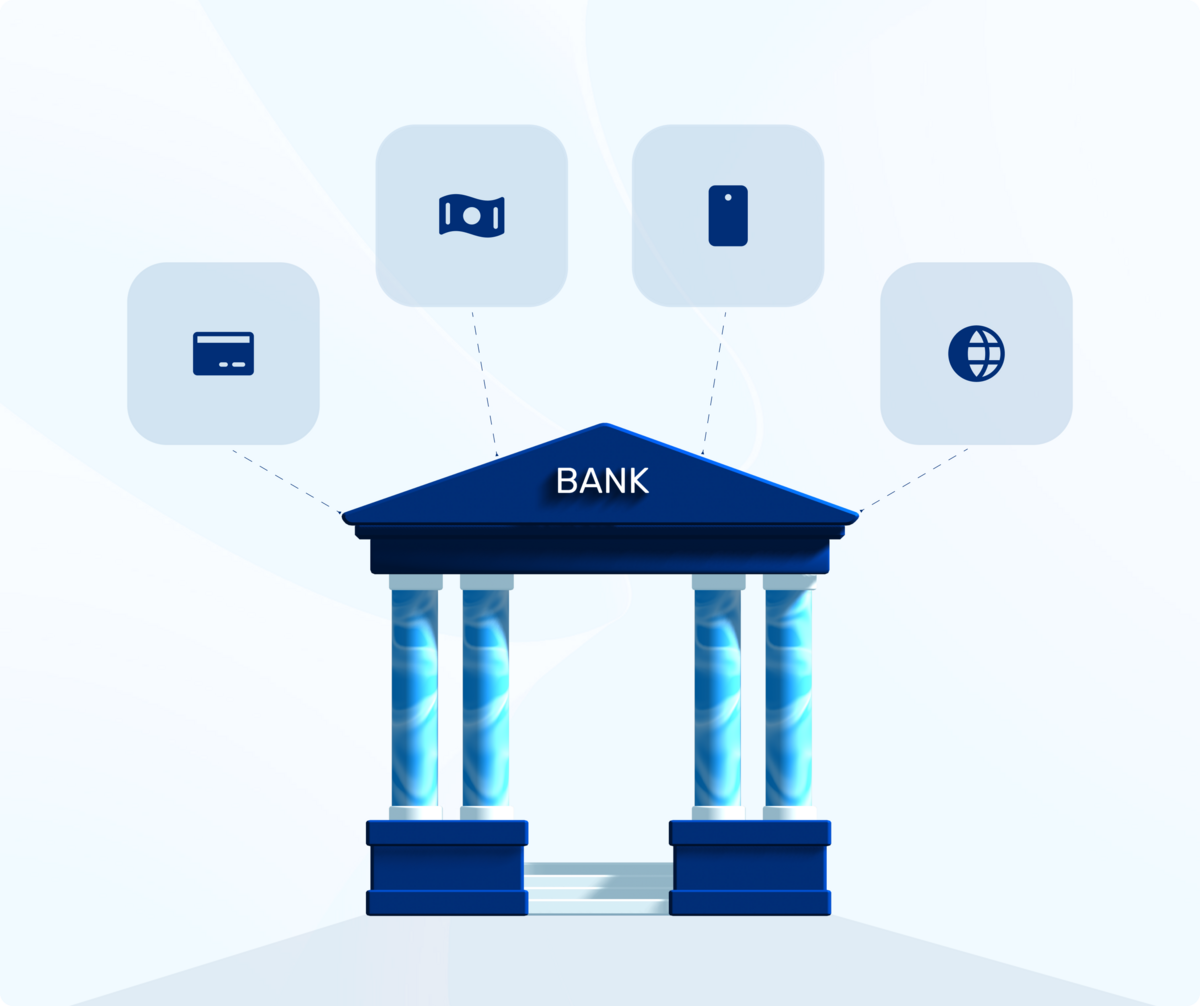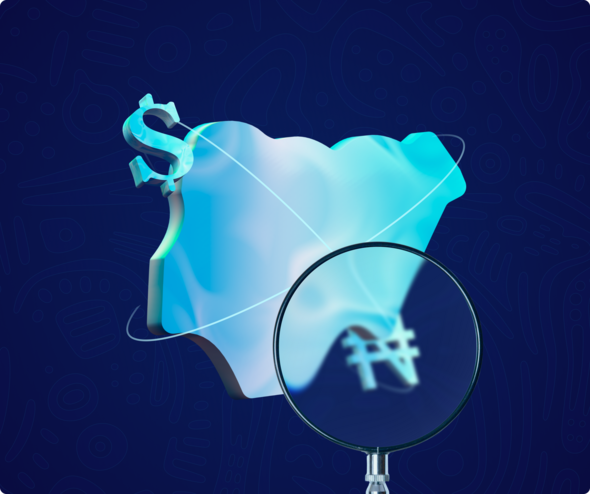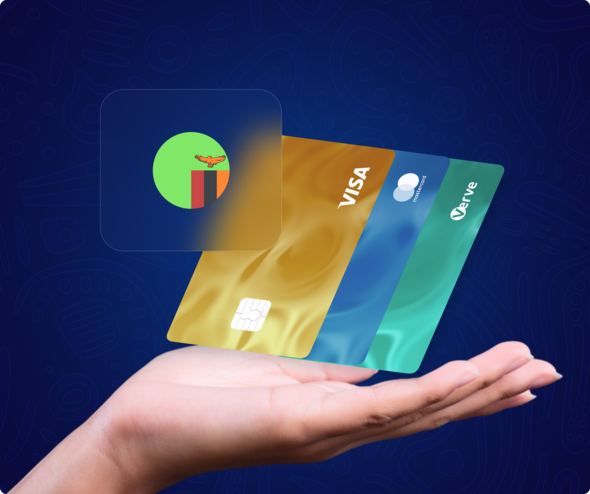According to a report, over 73% of human interaction with banks now takes place through digital interactions.
While this is not a fib, it’s also important to consider that 77% of consumers still consider traditional banking their primary or secondary provider.
Few years ago, we had to deal with the mental stress of queueing up at the bank every morning, just to withdraw enough cash to pay for necessary expenses. Yet today, the evolution of FinTech products has revolutionized the financial market to focus optimally on satisfying users' experiences. Banking-as-a-service isn’t lost in this list.
Here, we’ll give a complete breakdown of the difference between BaaS and traditional banking, what it means for the financial market, and how you can take advantage of it.
If you own a startup or are about to venture into the financial industry, this article will help you make the right financial decision.
Read on to find out how!
What is Banking-as-a-Service (BaaS)?
Banking-as-a-service or BaaS is a solution that allows non-banking companies to access the data and digital information of licensed banks through an Application Programming Interface (API).
Through this modern API-driven tool, financial and non-financial institutions can offer the capabilities of traditional banking without the need to create a new infrastructure from scratch. This approach provides a more accessible, flexible, and scalable solution that non-banking institutions can offer to their customers without compromising their efficiency.
Hence, these institutions can open an account, lend money, manage multi-currency accounts, issue cards, etc., without the direct oversight of a traditional bank.
Unsurprisingly, many institutions are taking advantage of this approach. Such as:
- Uber: In collaboration with Barclays Bank and Green Dot, Uber has created a financial management platform where drivers can take out loans on the app to purchase or rent a car for business, issued debit cards to enable drivers to make purchases at authorized merchants and cash out trip earnings, plus others.
- Cash App: What started as a peer-to-peer payment solution for users has now evolved into a platform that trades cryptocurrencies, facilitates ACH payments, provides investment opportunities, and more.
Be well aware that these BaaS integrations are not just limited to financial institutions. Companies like Apple have partnered with Goldman Sachs to offer its own card - Apple Card (a card with daily cashback, bill payment processing, store locator, etc). The same goes for Amazon, a site looking to render small business loans through its money-lending platform.
As such, BaaS can be regarded as the backbone of digital banking, positively driving an era of embedded financial services. Hence, giving other businesses outside of the banking sector the opportunity to evolve and effectively elevate the financial market.
The Rise of BaaS Amidst the Traditional Banking System
The evolution of BaaS started out as a need to provide convenient and more accessible banking solutions to consumers. By 2026, these embedded banking solutions in eCommerce business and software platforms will account for up to $7 trillion.
Traditional banks operated a closed banking system filled with paper trails, physical branches, and slowly driven financial products. While this method guaranteed stability, it also couldn’t meet customers' constantly growing demands. It lacked efficiency, speed, and adaptability to the digital landscape.
Hence, banks transitioned to online banking services which allowed users to complete certain transactions remotely. This marked the beginning of digital banking operations. However, many financial institutions were unable to offer financial products without dealing with regulatory and operational issues that came with these products. In other words, the banks own the infrastructure and these institutions can not use or advance the infrastructure without facing compliance issues.
To help with this, banking-as-a-service was led as a model solution to help non-banking businesses build financial products on the pre-existing infrastructure and license of the BaaS providers (banks).
This helps to significantly cut down the time-consuming effort and complex process of getting a license and building a banking infrastructure while facilitating speedy and advanced innovations in the financial market.
In some cases, the institution may develop new products on the preexisting infrastructure and offer the service to its customers under its own brand. It can also offer the newly built product as a BaaS solution to interested institutions.
“The future of banking isn't about choosing between digital and traditional—it’s about blending the strengths of both. BaaS lets startups skip the red tape and get straight to innovation, but the real winners will be those who also understand the trust and structure that legacy banks have built over decades.”
~ Gift Emihia, Finance Lead at Miden.
The Future of Banking: Are Banks Becoming a Platform Business?
Banking-as-a-service is changing the dynamic of the financial market. With embedded API integration, businesses can offer innovative financial products and services without creating a new infrastructure or getting a banking license. This also helps traditional banks generate new revenue streams by acting as the backbone of these innovations.
Banks are now embracing the concept of collaboration over ownership. Rather than competing with financial businesses, they are offering white-label financial services and expanding their reach across sectors. This promotes an interconnected financial ecosystem.
“If speed and agility are your priorities, Banking-as-a-Service (BaaS) is the way to go. But not all providers are the same—choose a partner with a proven track record of stability, quality, and innovation. The right partner gives you a ready-made canvas to innovate, customize, and scale without starting from scratch, they let you focus on what matters most: delivering value and scaling your business.
Traditional banking infrastructure, while robust, comes with heavy costs—time, money, and regulatory complexity. Building your own stack is a massive undertaking. It has its perks eventually, but it’s mostly reserved for those with deep pockets and a lot of patience—and it’s not advisable if you’re aiming for a first-mover advantage in the industry.”
~ George-Daniel OSUAGWU. MBA, Head of Products at Miden.
Common-Use Cases of BaaS
Financial and non-financial businesses can leverage BaaS in the following ways:
- Allow users to make payments, transfer funds, settle transactions, and more.
- Hold digital wallets and create multicurrency accounts with local bank details.
- Facilitate loans and financing options, such as: Buy Now, Pay Later (BNPL).
- Render branded payment accounts, invoicing tools, and financial management services.
- Issue debit, credit, or prepaid cards to their clients, employees, suppliers, and more.
Importance of BaaS to Financial Institutions
Whether you’re managing a FinTech startup or other institutions, utilizing the BaaS solution brings a host of advantages. Some of these are:
- Reduced Time Processing: By utilizing the BaaS provider's existing infrastructure, financial and non-financial institutions can skip the lengthy process of building a new infrastructure and focus on advancing the existing market and staying ahead of the competition.
- Increased Revenue: Through fees, interests, or commissions, institutions can improve their revenue generation and monetize the embedded financial services. For example, an eCommerce business can incorporate a payment gateway on the website, thereby increasing the chances of customers purchasing its product without leaving the site. Additionally, offering multi-currency digital wallets, issuing branded payment cards, and giving loans with interest are means to increase revenue streams without necessarily building a new infrastructure or getting a banking license.
- Competitive Advantage: BaaS helps these institutions stay ahead of the competition by offering unique financial services designed specifically for the brands’ target users. With the right financial tool, you can turn existing users into loyalists, and scale your operations across the competitive market.
- Market Expansion: BaaS can be utilized by financial and non-financial institutions. While this is a great advantage to non-financial businesses, it also opens up new market opportunities with tremendous potential. For example, a ride-hailing app has been used to foster loan applications, digital wallets, and more.
Challenges and Consideration
While banking-as-a-service provides great benefits, it’s not a one-size-fits-all solution. Here are some important factors that you must put into consideration before venturing into it.
- Limiting Values: While BaaS is an innovative solution, many traditional banks still operate with outdated core banking functions. This can pose a serious limitation for distributors (institutions) who are interested in advancing their financial services.
- Technological Dependency: Relying solely on a third-party banking technology without refining it to your unique brand voice may seem overly dependent. This can cause reputational damage and adaptability challenges.
- Security Breach and Privacy Concerns: Operating a BaaS technology means possessing strong security measures to protect consumers’ data and prevent cyber security threats.
Conclusion & Recommendations
Implementing the BaaS solution comes with certain risks and advantages. However, this is also a great opportunity for you to build unique products that set a world record.
For better advantage, I would recommend that you thoroughly conduct your due diligence on your selected BaaS partner before sealing the deal. Also, promote clear communication, choose an ECB license rather than an EMI, ensure your provider has the proper infrastructure to promote scaling, and confirm ownership of developed services.
Once proper strategies are implemented, interested distributors can utilize these solutions to upscale their financial services and promote diversity in the industry.





